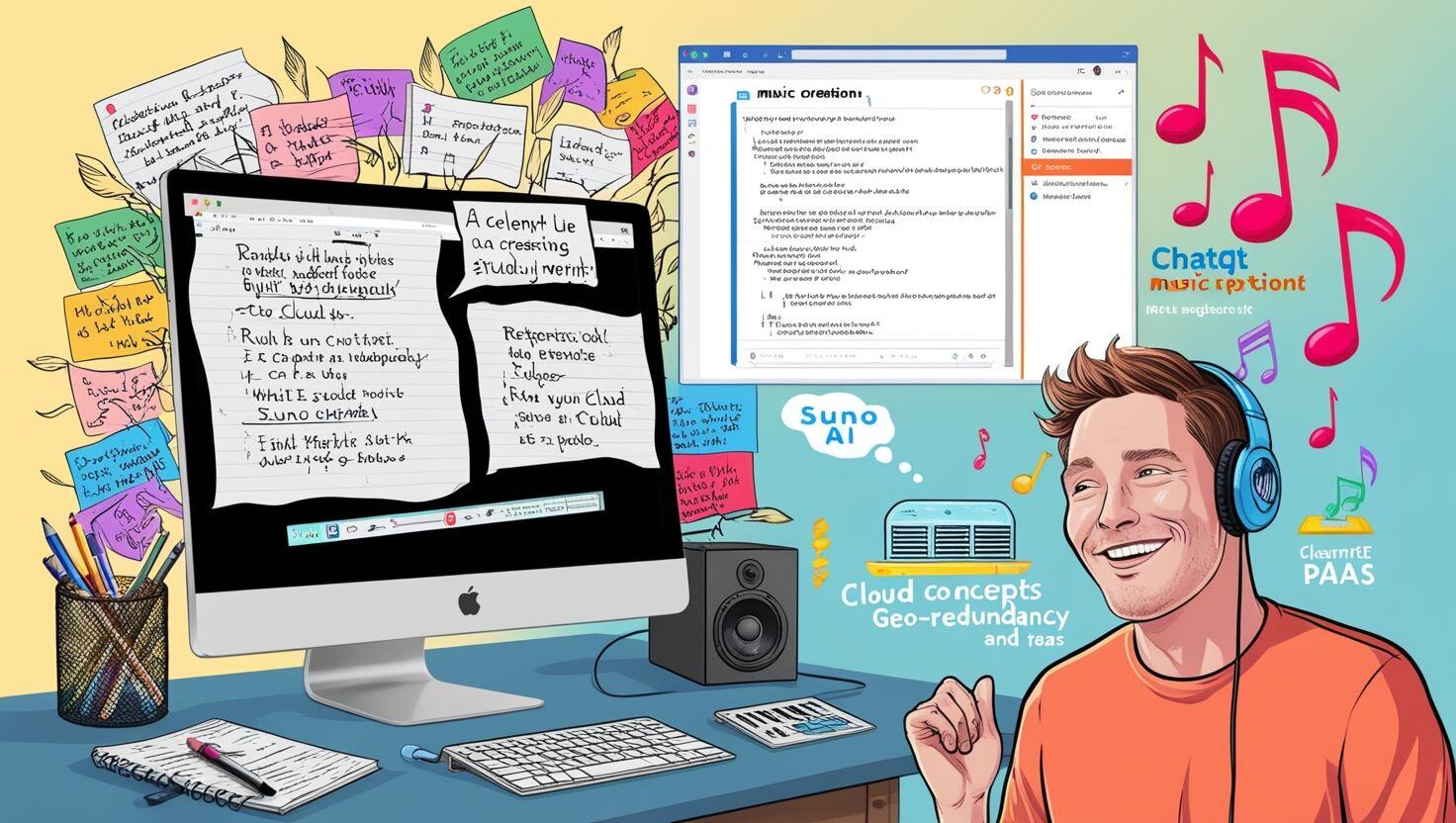The amazing hack to pass really boring exams
I’m a computer programmer, and like most programmers, I learn best by doing. Building, breaking, and rebuilding is how things make sense to me. This approach has helped me, like countless others, learn new technologies and build software. It’s been challenging and stressful, but rarely dull. However, anyone who’s ever taken a cloud exam, or really any exam that requires a lot of rote learning, will understand my frustration at not being able to learn in the way I enjoy most.
In cloud environments, the hands-on, break-and-rebuild approach that works so well in app development can be costly and impractical. Sure, there are labs and mock projects, but replicating real-world scenarios is difficult - and trust me, I’ve tried. However, passing these exams is important.
 Crossing the gap between hands-on coding and rote learning
Crossing the gap between hands-on coding and rote learningWhy certificates are important
I work for Daemon, a technology consultancy with staff all over London and South Africa. We specialise in solving complex problems, often cleaning up the mess left by others. One of the ways clients find us is through cloud platforms themselves. For Azure, AWS, and Google, proving that you know what you’re doing means showing work - and having accredited staff so the providers can vouch for your skills.
So, when I was asked to complete a series of Azure certifications, I was genuinely worried. Would I be able to focus without something tangible to work on? That fear was confirmed after a full day of studying when I realised I’d learned nothing. I’ve studied enough to know when something isn’t working, so on day two, I tried a new approach.
My new learning method
I started by doing what I usually do: watching videos and reading materials. But instead of forcing myself to absorb everything, I took very scruffy notes. They weren’t pretty, but they captured the main points I needed to focus on.
Next, I turned to ChatGPT. I fed my messy notes into the AI and asked it to sense-check them. Of course, I didn’t blindly accept its output. I carefully compared the revised notes against my originals to ensure everything aligned with my understanding. If anything didn’t match, I researched the concept further.
This approach was definitely more fun, but to make it even more engaging, I took a bit of a left turn. I decided to turn my notes into a song. I used a tool called Suno AI, which lets you choose a type of music and either generate or set your own lyrics. The results were fairly odd, but totally engaging. Here are some clips from songs about geo-redundancy, PaaS, and availability zones:
Catchy and annoying - none of them are winning a Grammy, but that wasn’t the point. The process of listening to the songs, choosing which versions worked best, and tweaking the lyrics to emphasise key points—or just to make myself laugh—helped a lot. By the time I finished revising the songs, I’d gone over my notes four or five times, reinforcing my understanding of the material. I even added the songs to a playlist, giving me a resource to revisit for quick refreshers.
To test my new knowledge, I took practice exams. Whenever I encountered a concept I wasn’t confident about, I made another song. This iterative process of creating music, reviewing concepts, and taking practice exams helped me internalise the material in a way that finally clicked.
And hey presto, it worked—I happily passed the exam, and importantly I actually enjoyed it.

I was so pleased with myself that I talked to some friends and family who work in education. They gently informed me that I hadn’t just created a whole new way of learning, but had instead applied some long-standing learning theories.
The role of learning theories
Jerome Bruner, for example, was a pioneer in cognitive psychology who believed in discovery learning, where learners actively engage with material instead of passively absorbing it. His idea was that understanding comes from hands-on exploration—exactly what I was doing by building those songs, reworking my notes, and testing myself. Bruner also championed something called the Spiral Curriculum, where learners revisit concepts repeatedly, each time at a deeper level. By revisiting my notes in different formats—videos, AI summaries, and songs—I was unknowingly following this model, reinforcing my understanding with every pass.

Lev Vygotsky's theory of the Zone of Proximal Development (ZPD) also fits well with my experience. The ZPD refers to the space between what a learner can do independently and what they can achieve with guidance. Vygotsky emphasised the importance of scaffolding in this zone—temporary support that helps learners master tasks they wouldn’t be able to on their own. In my case, AI tools like ChatGPT acted as that scaffold, providing assistance without giving me all the answers, which helped deepen my understanding.
John Dewey, a strong advocate for experiential learning, argued that education should be rooted in doing rather than memorising. He believed learning is most effective when it’s active and connected to real-world experiences. Although I wasn’t in a live cloud environment, the act of creating songs and interacting with the material in a personal way brought that active engagement Dewey championed.
So, what I thought was a quirky new method was actually a mix of several well-established theories—Bruner’s discovery learning, Vygotsky’s scaffolding, Dewey’s experiential learning —all wrapped up in a personal, creative package. This blend of theory turned what could have been a tedious study session into something interactive, fun, and ultimately effective.
Ultimately, this approach mirrors how many people in tech, including myself, learn best: by doing, tinkering, and rebuilding our understanding piece by piece.
My advice going forward
Of course, this method might not work for everyone or in every situation. Cloud providers frequently update their platforms, and the breadth of material can be overwhelming. But when you’re struggling to absorb something, sometimes it helps to think outside the box—or, in this case, outside the cloud. 😉
If you’re like me and struggle with passive learning, I encourage you to experiment with different methods. Whether it’s through AI, music, or some other creative approach, there’s always a way to make learning work for you. And if anyone tells you to stop listening to those annoying songs, just tell them you’re following Bruner’s Theory of Spiral Curriculum whilst you work out your ZPD. If they’ve got a better approach to learning theory, you’d love to hear it. They might think you’re even stranger than they did before … but odds are, they’ll leave you to your creative study methods and you can pass your exams in peace.
Useful Links
If you would like to:
-
Get in touch with me to know more feel free to connect on LinkedIn (Ben Preston)
-
Know more about Daemon get in touch with one of the team here
-
Listen to a full Azure Playlist in full you can find it here
-
To learn more about the theories described click here: https://www.structural-learning.com/post/jerome-bruners-theories#:~:text=Bruner
All images generated with leonardo.ai

